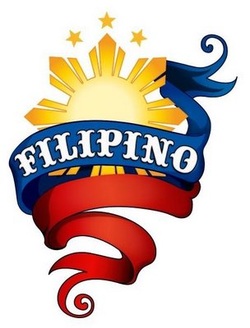National Flag
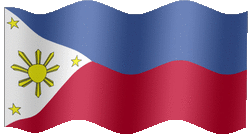
The national flag of the Philippines (Tagalog: Pambansang Watawat ng Pilipinas) is a horizontal flag bicolor with equal bands of royal blue and scarlet red, and with a white equilateral triangle at the hoist; in the center of the triangle is a golden yellow sun with eight primary rays, each containing three individual rays, which represent the country's provinces; and at each vertex of the triangle is a five-pointed golden yellow star, each of which, represent the country's 3 main islands, Luzon, Visayas and Mindanao. This flag can indicate a state of war if it is displayed with the red side on top.
The Coat of Arms of the Philippines
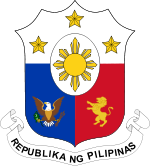
The Coat of Arms of the Philippines features the eight-rayed sun of the Philippines with each ray representing the eight provinces (Batangas, Bulacan, Cavite, Manila, Laguna, Nueva Ecija,Pampanga and Tarlac) which were placed under martial law by Governor-General Ramón Blancoduring the Philippine Revolution, and the three five-pointed stars representing the three primary geographic regions of Luzon, Visayas, and Mindanao. In the blue field on the left side is the Eagle of the United States, and in the red field on the right is the Lion-Rampant of Spain, both representing colonial history. The design is very similar to the design briefly adopted by theCommonwealth of the Philippines in 1940. It is also used by the Philippine National Bank.
National Anthem Of The Philippines
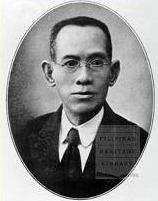
Lupang Hinirang is the national anthem of the Philippines. Its music was composed in 1898 byJulián Felipe, with lyrics in Spanish adapted from the poem Filipinas, written by José Palma in 1899.
Originally written as incidental music, it did not have words when it was adopted as the national anthem of the Philippines and subsequently played during the proclamation of Philippine independence on June 12, 1898. During the American occupation of the Philippines, the colonial government banned the song from being played with the passage of the Flag Law.[1] The law was repealed in 1919 and the song was translated into English and would be legalized as the "Philippine Hymn". The anthem was translated into Tagalog beginning in the 1940s. A 1956Pilipino (standardised Tagalog) version, revised in the 1960s, serves as the present anthem.
Originally written as incidental music, it did not have words when it was adopted as the national anthem of the Philippines and subsequently played during the proclamation of Philippine independence on June 12, 1898. During the American occupation of the Philippines, the colonial government banned the song from being played with the passage of the Flag Law.[1] The law was repealed in 1919 and the song was translated into English and would be legalized as the "Philippine Hymn". The anthem was translated into Tagalog beginning in the 1940s. A 1956Pilipino (standardised Tagalog) version, revised in the 1960s, serves as the present anthem.
National Flower
Jasminum sambac is a species of jasmine native to South and Southeast Asia.[3] It is a small shrub or vine growing up to 0.5 to 3 m (1.6 to 9.8 ft) in height. It is widely cultivated for their attractive and sweetly fragrant flowers. The flowers are also used for perfumes and for making tea. It is known as the Arabian jasmine in English. It is the national flower of the Philippines, where it is known as Sampaguita. It is also one of the three national flowers of Indonesia.
National Tree
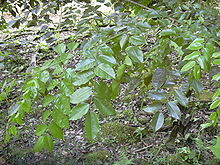
Pterocarpus is a pantropical genus of trees in the family Fabaceae, most of which yield valuable timber traded as padauk (or padouk); other common names are mukwa or narra. The scientific name is Latinized Ancient Greek and means "wing fruit", referring to the unusual shape of the seed pods in this genus.
National Bird
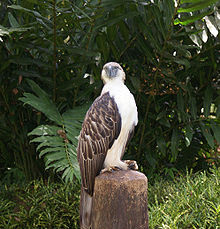
The Philippine Eagle (Pithecophaga jefferyi), also known as the Monkey-eating Eagle, is an eagle of the family Accipitridae that is endemic to forests in the Philippines. It has brown and white-coloured plumage, and a shaggy crest, and generally measures 86–102 centimetres (2.82–3.35 ft) in length and weighs 4.7 to 8 kilograms (10 to 18 lb). Among the rarest, largest, and most powerful birds in the world, it has been declared the Philippines national bird.It is critically endangered, mainly due to massive loss of habitat due to deforestation in most of its range. Killing a Philippine Eagle is punishable under Philippine law by twelve years in jail and heavy fines
National Martial Art and Sport
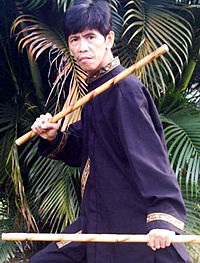
Eskrima (also known as Arnis[1] and in the West sometimes as Kali) is the umbrella term for the traditional martial arts of the Philippines, which emphasize weapon-based fighting withsticks, knives and other bladed weapons, and various improvised weapons.
National Dance
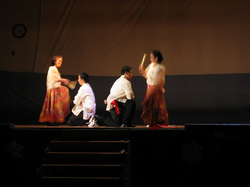
Cariñosa (Spanish pronunciation: [kaɾiˈɲosa], meaning the loving or affectionate one) is a Philippine dance of Hispanic origin from the Maria Clara suite of Philippine folk dances, where the fan or handkerchief plays an instrumental role as it places the couple in romance scenario.
National Animal

The carabao (Filipino: kalabaw; Malay: kerbau) or Bubalus bubalis carabanesis is a domesticated subspecies of the water buffalo (Bubalus bubalis) found in the Philippines, Guam, Indonesia,Malaysia, and various parts of Southeast Asia. Carabaos are associated with farmers, being the farm animal of choice for pulling both a plow and the cart used to haul produce to the market.
National Fish
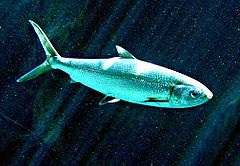
Milkfish have a generally symmetrical and streamlined appearance, with a sizable forked caudal fin. They can grow to 1.70 m (5 ft 7 in) but are most often about 1 metre (39 in) in length. They have no teeth and generally feed on algae and invertebrates.
They occur in the Indian Ocean and across the Pacific Ocean, tending to school around coastsand islands with reefs. The young fry live at sea for two to three weeks and then migrate tomangrove swamps, estuaries, and sometimes lakes and return to sea to mature sexually and reproduce.
They occur in the Indian Ocean and across the Pacific Ocean, tending to school around coastsand islands with reefs. The young fry live at sea for two to three weeks and then migrate tomangrove swamps, estuaries, and sometimes lakes and return to sea to mature sexually and reproduce.
National Leaf
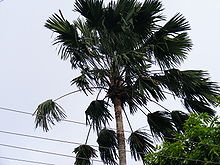
Livistona rotundifolia is a round-leaf fountain palm found in Southeast Asia. It is a member of the genus Livistona. It is also called Footstool palm (English) and Anáhaw (Filipino). It is the unofficial national leaf of the Philippines.
It is a common landscaping plant in the region. It can grow in sub-tropical climates and humid, tropical areas.
The leaves are used for thatching and food wrapping. Overharvesting of leaves of wild plants have reduced leaf size. The leaves do grow faster after harvest but tend to be smaller.
It is a common landscaping plant in the region. It can grow in sub-tropical climates and humid, tropical areas.
The leaves are used for thatching and food wrapping. Overharvesting of leaves of wild plants have reduced leaf size. The leaves do grow faster after harvest but tend to be smaller.
National Fruit
The mango is a fleshy stone fruit belonging to the genus Mangifera, consisting of numerous tropical fruiting trees in the flowering plant family Anacardiaceae. The mango is native to India from where it spread all over the world. It is also the most cultivated fruit of the tropical world. While other Mangifera species (e.g. horse mango, M. foetida) are also grown on a more localized basis,Mangifera indica – the common mango or Indian mango – is the only mango tree commonly cultivated in many tropical and subtropical regions, and its fruit is distributed essentially worldwide.
In several cultures, its fruit and leaves are ritually used as floral decorations at weddings, public celebrations and religious ceremonie
In several cultures, its fruit and leaves are ritually used as floral decorations at weddings, public celebrations and religious ceremonie
National Costume
The barong Tagalog (or simply barong) is an embroidered formal garment of the Philippines. It is very lightweight and worn untucked (similar to a coat/dress shirt), over an undershirt. In Filipino culture it is a common wedding and formal attire, mostly for men but also for women. The term "barong Tagalog" literally means "a Tagalog dress" in the Tagalog language; however, the word "Tagalog" in the garment's name refers to the Tagalog region, not the region's language of the same name.
Baro't saya is the unofficial national dress of the Philippines and is worn by women. The name is a contraction of the Tagalog words baro at saya, meaning "dress (blouse) and skirt".
National Songs
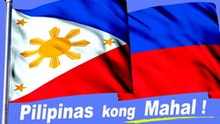
"Bayan Ko" (English: My Country) is one of the most recognizable patriotic songs in the Philippines that, because of its popularity, is sometimes assumed to be a folk song and the unofficial national anthem of the Philippines. It was originally written as a poem by José Corazón de Jesús in 1929, and set to music by Constancio de Guzman.
Pilipinas Kong Mahal (English: My Beloved Philippines) is one of the most popular patriotic songs in the Philippines, others being Bayan Ko ("My Country") and Magkaisa ("Unite"). In the Philippines, patriotic songs are often sung by people at political rallies, protests and demonstrations. These are also performed in plays and patriotic song or dance numbers, especially in schools during Araw ng Kasarinlán (Independence Day) celebrations in June andBuwan ng Wikà (National Language Month) in August.
Pilipinas Kong Mahal (English: My Beloved Philippines) is one of the most popular patriotic songs in the Philippines, others being Bayan Ko ("My Country") and Magkaisa ("Unite"). In the Philippines, patriotic songs are often sung by people at political rallies, protests and demonstrations. These are also performed in plays and patriotic song or dance numbers, especially in schools during Araw ng Kasarinlán (Independence Day) celebrations in June andBuwan ng Wikà (National Language Month) in August.
Symbolizing the Filipino people
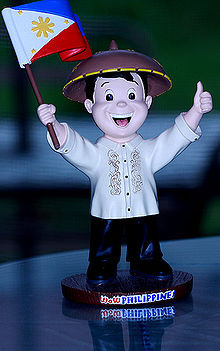
Juan dela Cruz is the national personification used in the Philippines to represent the "Filipino". The name, Spanish for "John of the Cross", is roughly the equivalent of the American Uncle Samand John Doe. Juan dela Cruz is usually depicted wearing the native Salakot hat, Barong Tagalog, long pants, and slippers (called Tsinelas in Filipino). The term Juan dela Cruz (sometimes shortened to "Juan") is also used when referring to the collective Filipino psyche.
National Hero
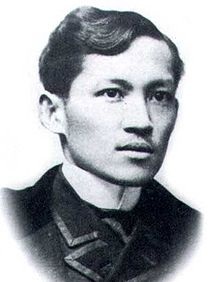
José Protacio Rizal Mercado y Alonzo Realonda (June 19, 1861 – December 30, 1896, Bagumbayan), was a Filipino polymath, patriot and the most prominent advocate for reform in the Philippines during the Spanish colonial era. He is regarded as the foremost Filipino patriot and is listed as one of thenational heroes of the Philippines by National Heroes Committee. His execution by the Spanish in 1896, a date marked annually as Rizal Day, aPhilippine national holiday, was one of the causes of the Philippine Revolution.
National Sport
Sipa (lit. kick or to kick) is the Philippines' traditional native sport which predates Spanish rule. The game is related to Sepak Takraw. Similar games include Footbag net, Footvolley, Bossaball andJianzi.
